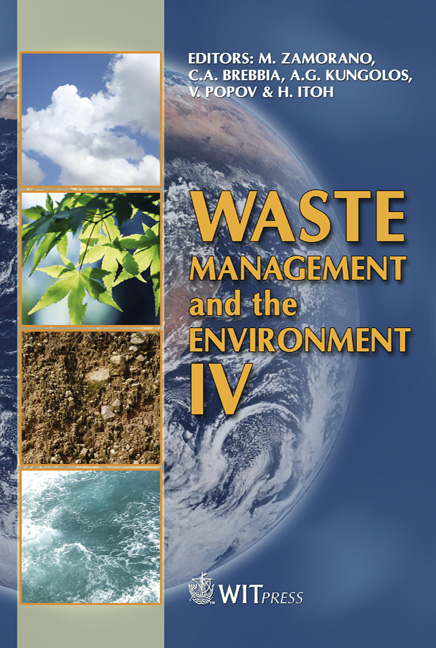Concrete Containing Thermoplastic Waste As Aggregates – The Effect On The Rebars’ Corrosion
Price
Free (open access)
Transaction
Volume
109
Pages
10
Page Range
449 - 458
Published
2008
Size
511 kb
Paper DOI
10.2495/WM080461
Copyright
WIT Press
Author(s)
S. Gavela, A. Ntziouni, E. Rakanta, N. Kouloumbi, & V. Kasselouri-Rigopoulou
Abstract
A lot of research has been performed on the utilization of waste products in concrete because it is widely used and has a long service life, which means that the waste is being removed from the waste stream for a long period. In the frame of an extended research program dealing with the utilization of thermoplastic waste, the effect on the reinforcement corrosion of concretes containing the above polymers as aggregates has been studied. As the amount of aggregates required in concrete is large, the environmental benefits are not only related to the safe disposal of the waste, but also to the environmental impacts arising from the extraction of aggregates, which include the visual intrusion and the loss of countryside. Three series of reinforced concrete specimens were prepared, one containing 12% by volume of aggregates high density polyethylene (HDPE), one containing 12% by volume of aggregates polypropylene (PP) and one without replacement of conventional aggregates. The specimens were cured in water for 7 days and then they were immersed in 3.5%wt NaCl solution. The following measurements were carried out in order to investigate if the corrosion behavior of the rebars is changed due to the replacement of the conventional aggregates by the thermoplastics: Potential versus time evolution, Linear Polarization, Electrochemical Impedance Spectroscopy, Carbonation Depth. Results showed that the replacement of conventional aggregates by the two polymers studied does not provoke rebars’ corrosion. Keywords: concrete, thermoplastic waste, aggregates, reinforcement corrosion, EIS, LPR.
Keywords
concrete, thermoplastic waste, aggregates, reinforcement corrosion, EIS, LPR.





